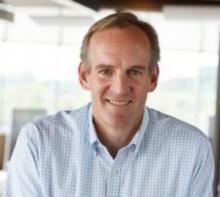The Cloud Boosts Practice Capacity

Self-scheduling has revolutionized many industries, but healthcare is late to the party.
For more than a decade, Fandango customers have been able to reserve movie ticket online – and now it’s used by about 30 million consumers each month. Likewise, millions of people now routinely self-schedule everything from haircuts to cab rides.
According to a recent Accenture study, healthcare providers are rapidly adopting self-scheduling technology. The report predicts that two-thirds of all health systems and patients will book appointments online by 2019, adding $3.2 billion in value to the industry. The study also predicts that 100 percent of the top 100 U.S. health systems will implement self-scheduling technology within four years (up from an estimated 40 percent today).
Unlike most other industries, the healthcare field has rarely examined its capacity. In aviation, the obvious goal is to fill every seat for every flight – and the airlines are doing a better job at that than ever.
But according to an MGMA study, the average physician practice in the U.S. operates at just 88% capacity, losing out to no-shows and last-minute cancellations. That’s about half a billion lost patient encounters each year. Just by reclaiming that lost capacity, we can add the equivalent of up to 50,000 physicians to the system. Some studies predict that there will be a physician shortage of up to 90,000 providers by 2025, but we might need far fewer if we could improve practice capacity.
The crux of the problem is aligning consumer demand for appointments with provider availability. That’s because most patients still phone the physician’s office to make an appointment. These consumers usually don’t have a clue about physician availability, which is typically highest on Friday afternoons. The resulting appointments are often at inconvenient times or far in the future – and research shows that long lead-times increase the rate of cancellations and no-shows.
Cloud-based scheduling makes it much easier to align demand with availability. The Accenture study found that it takes less than one minute to schedule a medical appointment online, while scheduling by phone can take over eight minutes on average – and 63% of that time is spent transferring the call from one staff member to another.
Here are some of the many advantages of online scheduling:
Patients get seen faster – Nearly a quarter of them get either same-day or next-day appointments – and more than half receive appointments within a one-week timeframe.
Greater convenience – More than half of all patients prefer to schedule outside of normal working hours – before work, during lunch or in the evening – when staff members aren’t around. They also prefer getting to choose a time-slot rather than being arbitrarily given one.
Better provider workflow – Online scheduling logic can ensure that hospital discharge follow-ups occur on the same morning each week.
Improved patient preparedness – By scheduling online, patients can fill out registration forms in advance and get important clinical reminders on pre-exam eating and drinking.
Increased show rates – Scheduling tools let the provider identify time-windows (such as late afternoon) when no-shows increase so that the practice can double-book for that period.
Faster, more effective referrals – It can often take 20 minutes to schedule a referral appointment using three-way calling. Online tools can handle the job in a fraction of that time – and ensure that the referral appointments are actually confirmed.
The healthcare field is finally catching up with innovations made by Uber, Fandango and many others. Online scheduling helps physicians care for more patients each day – and allows those patients to enjoy greater convenience and faster access. The most important resource in healthcare is our providers’ time. Self-scheduling technology helps maximize their time by streamlining workflow and helping eliminate costly no-shows.
Tom Cox is chief executive officer of MyHealthDirect.






